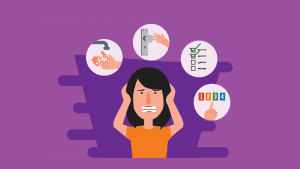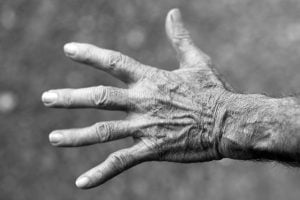Panic attacks are episodes with sudden and large escalation of psychogenic physical manifestations and excessive worry about these symptoms, which emerge with little or no warning. They often occur in calm conditions, such as when you lie on your couch, and sometimes ignite for a specific reason, such as the thought that because we are in an elevator you may be in danger. It is not uncommon for the stimulus of a panic attack not to be fully conscious or perceived – and this makes panic attacks even more frightening. The intense physical manifestations in a panic attack, such as tachycardia, feeling short of breath or choking, dizziness misinterpreted as impending fainting, confusion, blurring, and many more, lead a person having a panic attack to worry that something very serious is happening to their health, that they may be losing their life or their sanity.
They usually plague people who are already anxious and suffer from certain psychosomatic disorders. The fear of the fear of the next crisis predisposes to avoiding the condition in which a crisis occurred in the past or all similar conditions where we do not feel safe(agoraphobia), for example all enclosed spaces, public transport, staying at home without the company of someone else, and so on.When this happens, i.e. when we adjust our lives appropriately because of panic attacks, or when the attacks recur without feeling that we can control them, we suffer with Panic Attack Disorder that needs specialist help.
Fear of the fear of the next crisis predisposes to avoiding the condition in which it occurred.
There are, however, some first aid for panic attacks that can relieve the symptoms. Their common denominator of the first aid measures is to recover our self-control, for example on our breathing and our attention.

First aid in a panic attack
1. Remember that it will pass
During a panic attack, confidence in the thought that these symptoms will pass and that they do not really threaten our survival or our sanity – no matter how frightening they are at the time – can really help.
2. Take deep breaths
Diaphragmatic breathing is proven to help in controlling a panic attack.
Panic attacks can cause shortness of breath and tightness to the chest that further aggravates the feeling of anxiety.
Inhale “through the abdomen” for 4 seconds, hold your breath for 7 seconds and then exhale slowly and steadily for another 8 seconds.
3. Method 5-4-3-2-1
Regain self-control starting with your five senses.
Observe 5 separate objects. Think about each one for a moment, e.g. Its shape and color.
Listen to 4 separate sounds. For example a siren, a pacing.
Feel 3 different objects. For example, consider the texture and temperature of the seat you are sitting in, your clothing, etc.
Smell 2 different scents in the environment or get a bottle of essential oils with a soothing scent, such as lavender and bergamot.
Recall the taste of a food, or try a strong-tasting candy like cinnamon.
4. Repeat a phrase in your internal dialog
For example, a message to yourself, such as “I’m not really in danger.”
5. Walk or do light exercise
Walking as well as regular exercise can relieve stress, serving the need to regain our self-control on our body.
6. Try muscle relaxation techniques
We suggest progressive muscle relaxation, where we tighten and then relax all the muscle groups in our body one by one.
7. Imagine your happy place
Our happy place can be a specific beach where we felt great peace and calmness during the summer. Recall this place in as much detail as you can.
The treatment of Panic Attack Disorder
Cognitive Behavioral Psychotherapy (CBT) is the most effective method of treating Panic Attack Disorder. It targets both the automatic negative thoughts that cause anxiety and the behaviors that maintain it. Through the treatment process, the patient learns to recognize and reframe the catastrophic scenarios that trigger panic attacks, as well as reduce avoidance of anxiety-related situations, thus enhancing resilience.
CBT can be combined with medication, when necessary, for more effective symptom management and gradual recovery. At our practice, we provide an individualized treatment approach, using the most up-to-date GST practices in order to provide holistic care to our patients. You can even try our specialized self-help program “Anxiety, Phobias and Panic Attacks” at CureClass.





